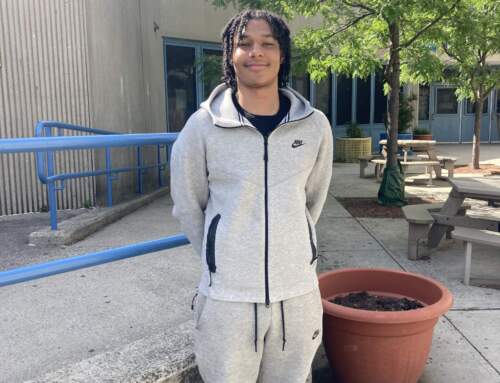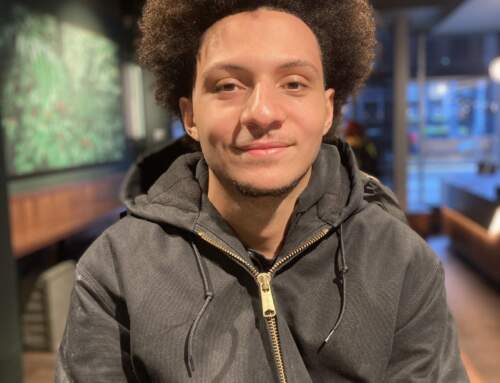By Richard Campbell
Now that the flood gates are about to open on the Massachusetts marijuana experiment, as a follow-up on Rick Winterson’s questions last week, it would be prudent to introduce some of the latest studies on the effects of the drug on the adolescent brain. The one thing that should be remembered is that adolescent brains (particularly male adolescent brains) are not fully formed and the consequences of smoking pot at this stage in life are different from adult use in many ways. Anyone who has read the literature will come to this conclusion. From more “mild” effects, like partial cognition and memory impairment, to the extreme effects for adolescents with vulnerable genetic predisposition towards mental illnesses, the record is not very encouraging.
For teenagers: remember that your brain is still developing, and while it does, it needs to be protected. Protecting your brain involves controlling your behavior, and not being too easily influenced by those who might introduce you to risky behaviors. Regular marijuana use causes a number of health problems for adolescents- perhaps the most important one being damage to cognition. Without hitting the panic button, adolescents and adults should look carefully at medical studies, and consider whether social conventions, or peer pressure should outweigh science.
Educators are already aware that the coming wave of legal marijuana requires them to up their game on the elementary school levels. To all high school students: be aware that science often wins over popular myth. The negative effects of marijuana on the normal adolescent brain are revealed in an increasing mountain of evidence. Of course, any adolescent who smokes pot on a daily basis probably is interrupting cognitive function enough to make learning this in school a lot more difficult. Medical researchers measuring real long-term effects, while not always conclusive, are pointing towards early cannabis use as being very destructive to brain function in the long run. High school students thinking of college in their future should take particular note.
“Early-onset marijuana users demonstrate poorer attention, cognitive inhibition and abstract reasoning, all of which are critical skills needed to function and succeed in a college environment. A large longitudinal study confirmed that adolescent-onset marijuana users showed the largest full-scale IQ drop between childhood and adulthood. Moreover, adolescent subjects who used marijuana regularly never reached their predicted IQ levels, even after sustained abstinence.” (1)
Often the perception of a drug is what controls usage, and reaction to it. The problem is that panicky prohibition after years of silence, is not the best way to control choice among adolescents. Carrying on a dialogue early and reinforcing it with positive actions throughout the adolescent lifespan is the best antidote. It beats yelling at a stoned kid any day of the week. Many studies show cognitive impairment acquired in adult users is not as severe, but this is not a panacea. The long term social harm associated with both drug and alcohol abuse on the adolescent brain is evidenced in multiple studies, regardless of what “educated” users say.
Recent studies show that many students are becoming more accepting of smoking pot on the high school level, with some studies reporting approximately 6.5% of high school students smoking daily. “Past-month use of marijuana increased between 2008 to 2013 from 5.8% to 7% among 8th graders, from 13.8% to 18% among 10th graders, and from 19.4% to 22.7% among 12th graders.” (2) Essentially more teens are now smoking pot than cigarettes. These figures are from a study in Clinical Psychiatry News, which reported that in 2014 which only “39.5% of 12 graders viewed marijuana as harmful.” That’s a number that has to change. While we rely upon adults to make decisions about recreational or medical use of the drug for themselves; clearly, we are approaching what could become a crisis with adolescents.
It is a stretch to say that a kid who smokes pot at a party is going to end up in the psych ward but given the kinds of substances that illegal pot can be laced with, it isn’t entirely impossible. One positive of the legalization scheme is the plant will be more carefully regulated to avoid youth accidentally partaking other harmful substances. As many can attest, the smoke that comes off people partaking in street pot in public is pretty toxic. The question of kids being exposed in public to second hand smoke is an important one. Recently this writer got stuck in a cloud of this “new pot” when shooting pictures at the St. Patrick’s Day parade, which made me nauseous and dizzy for an hour just from standing behind the partakers. I suspect that legalization is going to flood the MBTA with pot smoke, and it is hopeful that controls will be much better than the ones not enforced at outdoor stations for tobacco. Adult non-pot-smokers should humbly ask partakers to find some place out of the main areas of congregation to enjoy this stinky habit-especially when kids are around.
The interesting thing about some of the adolescent studies is that they show students who wait beyond adolescence to try cannabis (in their late twenties), it’s negative effects on cognition are significantly reduced. While medical cannabis would be more carefully controlled, the potency levels of the drug dispensed with or without medical advice are all over the charts- one more reason to fear its effect upon the adolescent brain. This makes sense, because the adolescent brain is still in development- that level of development is a critical factor in how the drug impacts a particular person. Not surprisingly the use of marijuana correlates with increased risky sexual behavior in adolescents. (3) Many studies show that the increased risky sexual and substance abuse behavior among adolescents is also highly correlated with adolescents who are experiencing psychological problems- though some studies failed to show this link. The point here is that parents should be on their guard for a pattern of behavior that might put their adolescent children in the at-risk category, but not panic when they discover their kids are acting like adolescents. Being informed about risk factors is critical, responding calmly is imperative.
In conclusion, adolescents who have parents who don’t monitor their behavior carefully have increased opportunities to abuse drugs and alcohol. Many researchers point out that adolescents with more social network, educational and extra-curricular assets are less like to fall into abuse patterns. The adolescent idea of status and being accepted as “cool” is far more powerful than many parents perceive- most older people have forgotten the pull of peer pressure. (4) Students that already have psychological problems are particularly at risk. One of the areas of study clearly missing in public school education is the detailed study of human development throughout the educational cycle, with attention to psychosocial stages of development. As it is, the subject of the effect of marijuana or alcohol on the cognitive development is difficult to teach to students who have had little exposure to the explicit study of the developmental stages of life.
So, as we head into what might be termed as the first Summer of Pot, we should reflect very carefully upon their responsibility to keep this substance out of younger hands. The National Institute on Drug Abuse (NIDA) provides a Web site for parents and teachers at www.drugabuse.gov/parent-teacher.html. Parents also can find resources at NIDA for teens at http://teens.drugabuse.gov. As it is we are getting a little extra time while the state bureaucracy bumbles around, and the community should take full advantage of that to spread detailed information. Adolescents in particular should make themselves busy enough this summer with activities to avoid being dragged into risky behaviors that could impair their mental abilities and bring them undue harm down the road in life. Their brains will thank them in the future.
REFERENCES:
1 Meda, Shashwath A., et al. “Longitudinal influence of alcohol and marijuana use on academic performance in college students.” PLoS ONE, vol. 12, no. 3, 2017
2 Rajaraman Madhu. “Report: Cannabis use attitudes more lax: from a teleconference sponsored by the nida.” Clinical Psychiatry News, Jan. 2014, p. 4.
3 Christian M. Connell, Tamika D. Gilreath and Nathan B. Hansen, “A multiprocess latent class analysis of the co-occurrence of substance use and sexual risk behavior among adolescents,” Journal of Studies on Alcohol and Drugs. 70.6 (Nov. 2009): p943
4 Zucker, Robert A., et al. “Assessment of culture and environment in the Adolescent Brain and Cognitive Development Study: Rationale, description of measures, and early data.” Developmental Cognitive Neuroscience, vol. 32, 2018, p. 107.
5 Clark, Duncan B., and Dawn L. Thatcher. “Emerging clues: is this teen at risk for substance abuse? Childhood characteristics may be predictive and suggest early interventions.” Current Psychiatry, vol. 8, no. 1, 2009, p. 19+






